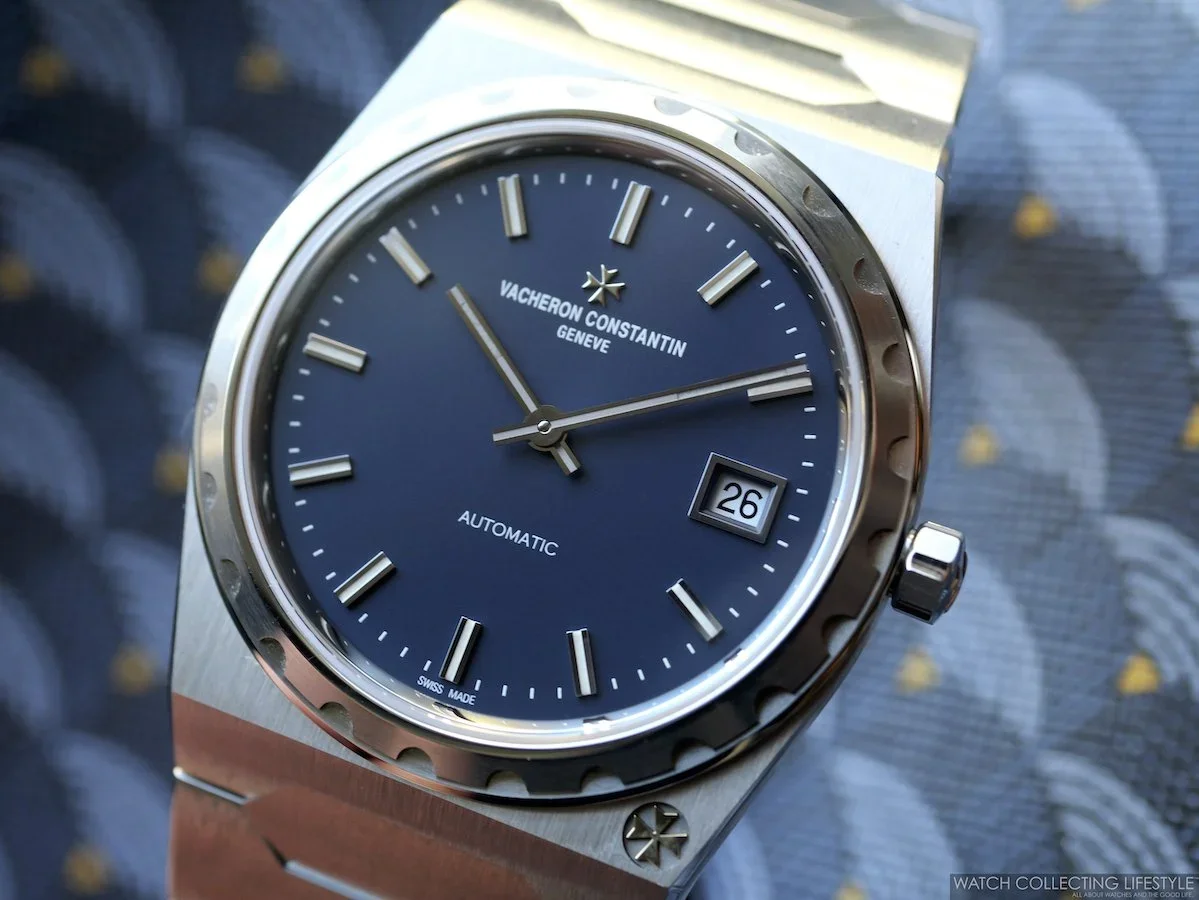We often run into watch collectors that frequently mistaken one type of Audemars Piguet tapisserie for another. Even though we have explained this topic in the past, we decided to to a revised post with more images and further explanation on the matter. While many know their names, few know the real difference between them. Additionally, many don't know how these dials are done and which models feature a stamped dial plate versus a rose engine machines one. The iconic 'Clous de Paris' guilloché pattern on the Royal Oak dials and Royal Oak Offshores is one of the most unmistakable elements of their design.
Since 2012, all dials are done in-house by Audemars Piguet after recovering 'guilloché' making machines from Canada and the United States. While mainly three different 'tapisseries' are offered by Audemars Piguet, in reality, we think that there are really four. Considering that there have been changes to the 'Petite Tapisserie' between the vintage Royal Oak references and the current ones, that should count as an additional one.
How the Tapisserie Dials are Created
The brass dial is engraved by a burin —a precision metalwork chisel— that reproduces the motif on a disc attached to the machine, like a pantograph. A pointer rotates across the disc from the periphery to the center. The system is combined with a tool that forms the little lozenges between the pyramidal squares and takes between 20 and 50 minutes, depending on the dial's diameter. It's a delicate operation. A mere skip is all it takes to damage the piece as the slightest impact is as visible as dust on a mirror. Below there's a video produced by Audemars Piguet a while back showcasing this process within their manufacture.
Types of Tapisserie
Vintage Petite Tapisserie
The Vintage 'Petite Tapisserie' is found on the first Royal Oak Jumbos, on mostly all Royal Oaks from the 80s and 90s and also on the first Royal Oak Offshore models bearing reference 25721. The squares are extremely small and the pattern looks tighter. Below we have a picture of an original dial from a Royal Oak Jumbo reference 5402SA circa 1978 and one of the dial on one of the very first Royal Oak Offshores reference 25721ST.
Petite Tapisserie
The 'Petite Tapisserie' is exclusive to the new Extra-Thin Royal Oak Jumbo ref. 15202 —presented last year commemorating the 40th Anniversary of the Royal Oak—, the reference 26510 Extra-Thin Tourbillon and replacement dials for vintage Royal Oaks —including Jumbos 5402— and Royal Oak Offshores like the 25721.
If you look closely at the next pictures, you'll notice the changes we are referring to with regards to the 'Petite Tapisserie'. The first picture is of a new replacement dial for a Royal Oak Jumbo 5402SA and the second picture shows a comparison between the original dial fitted to the same watch and the new dial.
You'll notice that the pyramidal squares from the 'Clous de Paris' pattern on the vintage dial seem smaller and there are 10 squares between the center pinion —where the hands are attached— and the calendar aperture. If you look at the replacement dial, you'll see that instead of 10 squares, there are only 9. While the change has been almost microscopic and millimetric, our trained eyes can still tell that there's a slight difference between them.
Grande Tapisserie
The 'Grande Tapisserie' is fitted on Royal Oaks bearing references 15300, 15400, 15450, 26320 Chronograph, 26330 Day & Date, 26120 Dual Time, 26252 Perpetual Calendar, 26603 Equation of Time and 25977 Tourbillon Chronograph. The squares on the pattern are considerably larger than on the 'Petite Tapisserie' by at least fifty percent. Also, you will notice that the imprinting of Audemars Piguet and Automatic is done over flat areas of the dial that were purposefully left untouched by the burin.
Méga Tapisserie
Lastly, the 'Méga Tapisserie' is the largest pattern of all dials and is typically found on most of the Royal Oak Offshore models including the Themes, Safari, Diver, Bumble Bee, Rubberclad, some of the limited editions and in all of the models within the new 44 mm references of the Royal Oak Offshore line.
Unlike the other types of tapisserie, Audemars Piguet decided to switch the process for these dials and as of a few years back these dials are stamped and not guillochéd. The dial on the black ROO Diver below was still created using a rose engine and was not stamped like the newer dials like that on the silvered dial Diver.
And even different Royal Oak Offshore models, one can find that the Méga Tapisserie features a different more raised or less raised finish on the square. Just like at the three pictures below to see the differences.
Now, the Royal Oak Offshore Perpetual Calendar is one of the exceptions, as its dial features the 'Grande Tapisserie' instead. The squares on the 'Méga Tapisserie' are at least double in size when compared to the 'Grande Tapisserie' and seem to always have a glossier finish.
Because you never get a second chance to make a first impression as Audemars Piguet says, we've included this gallery full of eye-candy for our beloved readers.
For more info on Audemars Piguet click here.


















